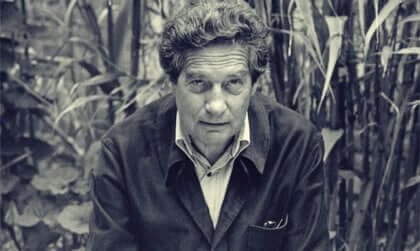Carlos Castaneda was a difficult man to classify. For many he was a wise man ahead of his time, endowed with impressive lucidity; for others, a charlatan who speculated with ancestral beliefs and became a millionaire selling books that said nothing.
His real name was Carlos César Salvador Arana Casta-eda, and he was born in Cajamarca (Peru) on December 25, 1925. Although he claims to be Brazilian, there are copies of his birth certificate in the Inca country.
- The son of a jeweler and housewife.
- He studied for the first time in his hometown and then completed high school in Lima.
- Then studied at the School of Fine Arts and.
- On the death of his mother.
- Traveled to the United States.
“Look at each path carefully and then ask yourself this crucial question: does my heart take me like this?If you take it, the road is good. Otherwise, it’s useless. ? -Carlos Castañeda-
In San Francisco, he took courses in creative writing and journalism, then graduated in Fine Arts from UCLA and then earned a doctorate in anthropology.
The data of his life are diffuse and inaccurate, for he himself was in charge of erasing his footprints when he began his process of spiritual transformation.
What we do know is that when it became natural in the United States, he only adopted his mother’s last name and replaced it?’For one’. Since then, his official name is Carlos Castañeda.
At first Carlos Castañeda did not have an easy life in the United States, he had to sell burgers on the street, work as a taxi driver and even as a hairdresser.
From 1960, before graduating as an anthropologist, he came into contact with Don Juan Matus, a shaman of the Yaqui community in the Sonoran Desert, Mexico. This link remained until 1973.
Also in 1960 Castañeda married Margaret Runyan, however, a few months later he left her for another young woman named Mary Joan Barker, Carlos Castaneda admitted that he had a daughter named Marilyn Casta-eda, whom he never recognized.
Apparently, he recognized other children, although they were not biological. Her natural and biological daughter was not even mentioned in her multimillion-dollar will.
In his later years, Carlos Castaneda had several women who served as “acolites”. According to Amy Wallace, daughter of writer Irving Wallace, three of them were part of his inner circle.
They were all his lovers and apparently agreed to kill themselves collectively with Castaneda’s death.
Carlos Castaneda became world famous thanks to the publication of his book The Teachings of Don Juan, a form of Yaqui knowledge. The first edition had a preface to Octavian Paz.
The text includes Castaneda’s conversations with Don Juan Matus, with whom he allegedly began a learning process to become Nagano’s Toltec shaman.
According to Castaneda, Don Juan was the leader of the last group of wizards of a long dynasty, however, in his books, Castaneda combines Yaqui wisdom with Toltec traditions and even aspects of martial arts.
From an anthropological point of view, his work is unsifiable and therefore invalid.
One of the aspects that most attracted attention in his work was the description of altered states of consciousness induced by hallucinogens, apparently Don Juan introduced him to the use of peyote.
Castaneda did not submit the field records of the experiment, which makes many think that Don Juan did not even exist, for them the whole story is nothing more than a literary fiction.
Carlos Castaneda did not allow it to be recorded or photographed. Having made several publications in the same direction as the first, he announced in 1993 that he would announce the “magic passes”.
He created the Cleargreen Foundation to promote his new approach and, thereafter, made several public appearances.
From the beginning, carlos Castaneda’s work caused a stir, he had followers all over the world, true fans of his work, including John Lennon, Deepak Chopra and Federico Fellini.
At the same time, in scientific circles, his work was seen with enormous suspicion, even the FBI followed in his footsteps when he suspected he was the leader of a dangerous cult.
In your work there is a great contradiction of dates, there is also data of Yaqui culture that do not match those collected by specialists in the discipline, despite the strong doubts left by Castaneda’s work, still has thousands of followers all over the world.
Castaneda died in Los Angeles in 1998 of liver cancer, however, there was no trace of the internal fire that he said consumed it from within and would take it wrapped in light to another dimension.

